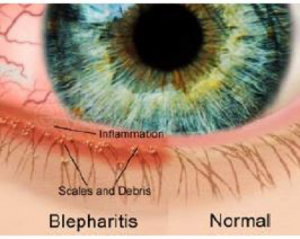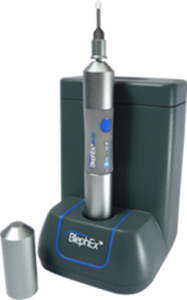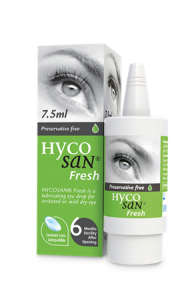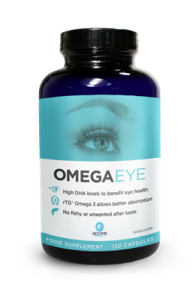Dry Eye Disease can be expertly diagnosed and managed by your Optometrist. At Colin Picken Eyecare, we offer private dry eye assessments which include a detailed analysis of your tear film using state of the art laboratory equipment. This allows us to pinpoint the cause of your dry eyes and compile a personal treatment plan to help alleviate your symptoms.
The TEAR CLINIC is a specialist eye care service (available privately) to diagnose and manage ocular surface disease. Whilst it cannot be cured, it can be effectively managed with correct diagnosis and appropriate treatments, relieving dry eye symptoms and preventing long-term complications.
If you suffer from any of the symptoms illustrated in the diagram, you could be suffering from ocular surface disease.
What is ocular surface disease?
Ocular surface disease is a general term used to describe a range of very common conditions that affect tear quality and the surface of the eye, including:
Ocular surface disease goes largely undiagnosed and untreated and affects a significant number of people – both young and old. Early intervention is crucial in preventing progressive and possibly permanent damage to the eyes.
It is also one of the most common causes of discomfort in contact lens wearers, often leading to reduced or discontinued lens wear. With appropriate management, those affected can look forward to comfortable contact lens wear again.


Dry Eye Disease is a common condition affecting people of all ages. It occurs when there is an insufficient volume and/or quality of tears to keep the surface of the eye sufficiently lubricated. The common symptoms of dry eye are itchiness, redness and irritation.
It is a chronic and progressive disease meaning proper diagnosis and management is necessary to address it. Whilst it can never fully be cured, it can be very effectively managed once the causative factors have been identified and an appropriate management plan has been put in place.
Dry Eye Disease can be caused by many factors including:
Wearers are more susceptible to dry eyes. Discomfort from dryness is a major reason why people stop wearing contacts.
In winter, exposure to cold wind can dry our eyes. In spring, hay fever means dry eyes often get worse – anti-histamine can actually cause further dryness.
Air conditioning in cars, offices and airplanes.
A normal blink rate is between 8 and 6 times a minute, but this can slow to once or twice a minute when we are concentrating. This means that the tears that keep our eyes hydrated have more time to evaporate between blinks, contributing to dryness.
Meibomian Gland Dysfunction (MGD) is thought to be the leading cause of Dry Eye Disease.
It is a chronic disease, usually caused by obstruction of the secretory meibomian glands which are present along the eyelids. The subsequent reduction of gland secretion results in a decreased amount of lipids in the tear film.
As this lipid layer is responsible for protecting and stabilising the tear film, this results in faster evaporation of the tear film and thus an evaporative dry eye.

Blepharitis is an inflammation of the eyelid margins – the edges of the eyelid – which causes a range of uncomfortable symptoms including, dryness, itching, red skin, red eyes, tired eyes, and blurred vision. Blepharitis is commonly caused by an infection of the eyelash follicles and is estimated to affect 50% of people, to varying extents. Other causes can be underlying skin conditions such as rosacea or dermatitis.
Symptoms of Blepharitis include:
Demodex Blepharitis is a very common sub-type of Blepharitis caused by an infestation of the demodex mite. The demodex mites are extremely common and thought to be present in about 20% of people under 20-years-old rising to nearly 100% in people over 70. While they generally cause no problems, in susceptible people they can cause symptoms of Blepharitis.

The most important part of treating and managing Blepharitis is to keep the eyelids clean daily. For more severe cases, this chronic condition can be difficult to fully control through treatment at home. At Colin Picken Eyecare, we offer an in-practice eyelid cleaning procedure using the state of the art BlephExTM system to bring more serious cases under control. This offers the ultimate deep hygiene clean for eyelids to remove crusts, debris and dead skin, thoroughly cleansing the lashes and follicles and returning them to their best possible condition which in turn makes home treatments more effective for longer.

1. See a specialist – Have an assessment with an optometrist with a special interest in dry eye disease – that’s us! At Colin Picken Eyecare we run specialist Dry Eye Clinics where the cause and severity of your dry eye symptoms can be investigated, allowing us to advise on the best way to manage the condition and keep your eyes healthy.
2. Have a digital detox – Bad habits when using computers are some of the most common reasons for irritable, dry eyes. It’s caused by concentration and not blinking as often as we should so it’s important to take regular screen breaks to give your eyes a much-needed rest. Try the 20:20:20 rule; every 20 minutes, look at something 20 feet away, for 20 seconds. This is especially important in our modern digital age, as the use of smartphones and tablets means it’s not just adults that are affected, but also children.
3. Drops drops drops! – Finding an eye drop that is preservative free is important as preservatives can cause further aggravation to eyes that are already feeling sore. We stock a full range of specialist eye drops to cover everything from mild irritation to severe, chronic dry eye. For example, try the new Hycosan Fresh™ for mild dry eye conditions (available in practice). Hycosan Fresh™ contains all-natural ingredients including Euphrasia, a plant based extract, that has been shown to reduce irritation associated with dry eyes and Sodium Hyaluronate which is known for its hydrating properties, ensuring eyes stay lubricated for longer.

5. Enjoy more salmon and oily fish – Omega-3s, the fatty acids found in oily fish such as sardines, salmon and tuna steak will give your overall eye health a great boost and have been shown to relieve dry eye symptoms. If you don’t like eating oily fish, these vital health benefits can also be found in food supplements.
However, not all supplements are equal. Try a high-quality supplement like Omega Eye (available in practice) which is specially formulated for dry eyes and is rich in omega-3 fats EPA and DHA. Each recommended daily dose provides the same amount of omega 3’s as 9 tins of tuna.

References
1Research conducted by CensusWide in August 2015 amongst 1000 consumers via online survey.

